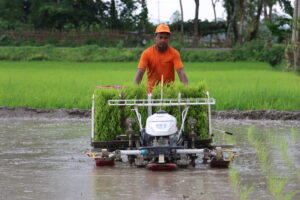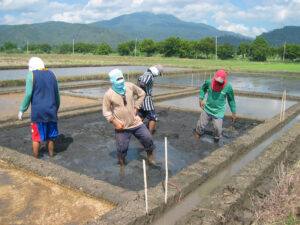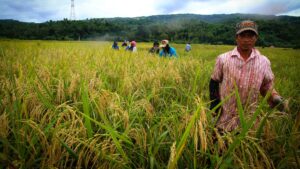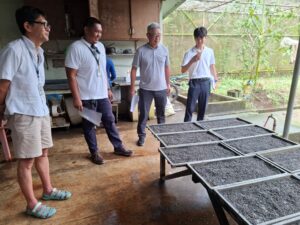By Van Schepler-Luu & Myrtel Anne Valenzuela
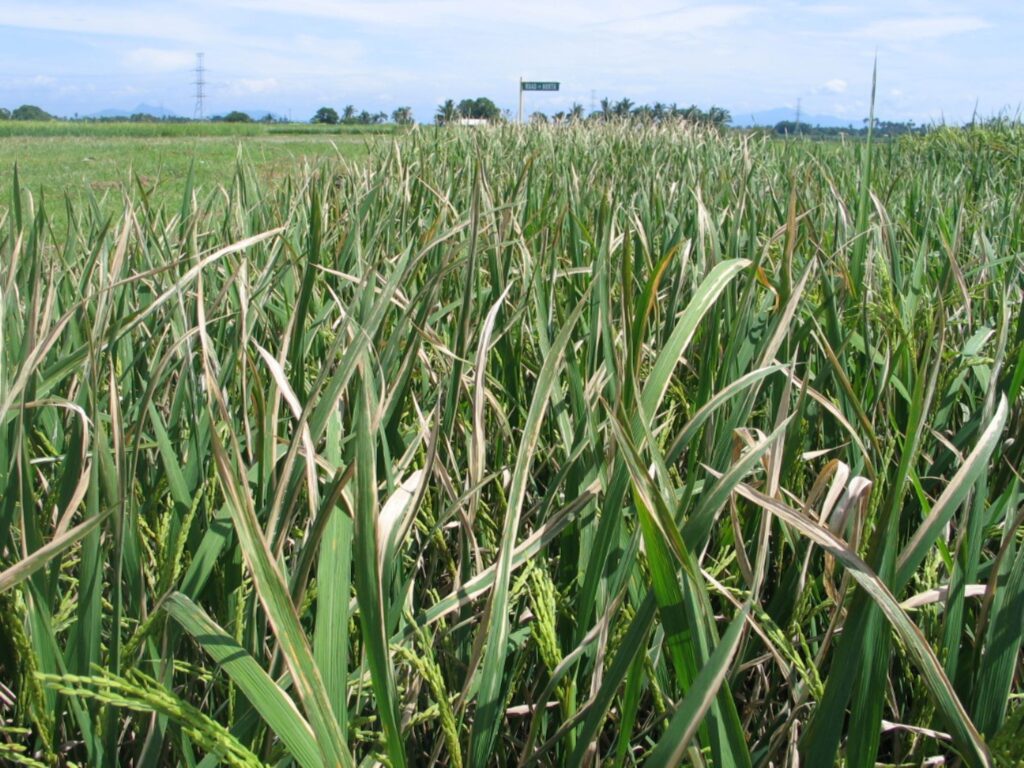
Rice diseases such as bacterial blight and blast are no strangers to farmers across Asia and Africa. Year after year, these fast-evolving threats reduce yields, undermine farmer livelihoods, and chip away at food security. However, scientists are staying one step ahead of these diseases through near-isogenic lines (NILs).
Near-isogenic lines are highly specialized rice lines that carry a unique resistance gene within an otherwise uniform background. Physically, they look just like any other rice plant, but this subtle genetic difference gives researchers a powerful way to study how these NILs respond to pathogens, and more importantly, how to breed stronger, more resilient rice varieties.
For over four decades, NILs have played a key role in breeding disease-resistant rice. The IRBB (bacterial blight) and IRBL (blast) lines, developed through a long-standing collaboration between the International Rice Research Institute (IRRI) and the Japan International Research Center for Agricultural Sciences (JIRCAS), have become global standards for studying rice diseases. From 2012 to 2025, over 1,100 samples were distributed to 26 institutions in 14 countries, which highlights their lasting impact on rice research and crop protection.
Origins of the Bacterial Blight Near-Isogenic Lines (IRBB)
The story of NILs began in the late 1970s, when IRRI’s then Director General Dr. Nyle Brady met with Japanese partners from the Japan International Research Center for Agricultural Sciences (JIRCAS). Inspired by the idea of targeted resistance, IRRI pathologist Dr. Tom Mew and breeders like Dr. Gurdev Khush worked closely with Japanese scientists Dr. Tsugufumi Ogawa and Dr. Tsuyoshi Yamamoto to create the first set of NILs for bacterial blight. These lines, later known as the IRBB series, became a landmark tool in rice disease research.
Over time, the IRBB lines helped identify critical resistance genes such as Xa7, xa13, Xa21, and Xa23. Scientists also used them to classify races of Xanthomonas oryzae pv. oryzae (Xoo), the pathogen that causes bacterial blight, turning Xoo into a model for studying plant-pathogen interactions.
Development of Near-Isogenic Lines for Rice Blast (IRBL)
Encouraged by the success of the IRBB lines, IRRI researchers expanded the approach to tackle blast, another major rice disease. Starting with the susceptible rice variety CO39, scientists like Dr. Mike Bonman and Dr. David Mackill worked with JIRCAS collaborator Dr. Tokio Imbe to develop a new set of NILs carrying blast resistance genes (Pi genes) later known as IRBL.
Between 1999 and 2010, Dr. Yoshimichi Fukuta and Dr. Nobuya Kobayashi developed 24 monogenic lines in rice varieties CO39 and LTH backgrounds. These lines now serve as global reference standards for blast resistance and form the basis of the International Rice Blast Research Network, established in 2003.
Trusted by breeders around the world
Today, breeders across the world use NILs to create rice varieties that stand strong against disease. In India, resistance genes from the IRBB lines contributed to widely adopted varieties like Improved Pusa Basmati-1 and DRR Dhan 60. In Bangladesh, IRBB60 played a key role in developing BRRI Dhan101, a popular variety for the Boro season. Indonesia’s Inpari 32, one of its most cultivated varieties, traces its disease-fighting ability back to IRBB64.
The impact reaches far beyond South Asia. In Madagascar, researchers are using NILs to strengthen local varieties. In the Philippines, the lines help track emerging pathogen strains. Even private companies like Bayer and Corteva Agriscience are turning to NILs to anticipate resistance breakdown and develop more robust breeding strategies.
Looking ahead
As climate change fuels new and more aggressive disease pressures, the role of NILs is expanding. Scientists are now integrating genes from wild rice relatives, identifying novel resistance genes through genome-wide association studies (GWAS), and stacking multiple resistance genes to build more durable varieties. NILs can also be used to tackle emerging threats like sheath blight, tungro, brown spot, and false smut.
In a world where tomorrow’s pathogens are already on the horizon, NILs help ensure that rice remains one step ahead, and farmers stay protected.
For the full report titled “History of IRRI–JIRCAS Bacterial Blight and Blast Near-Isogenic Lines: Cornerstones of Global Rice Pathology,” you may access via IRRI books


